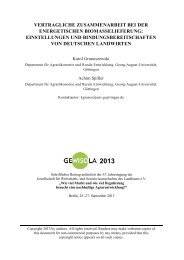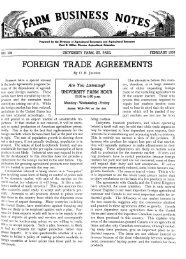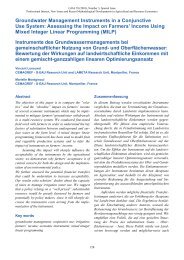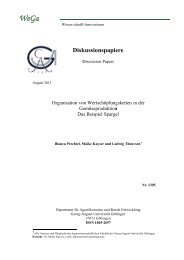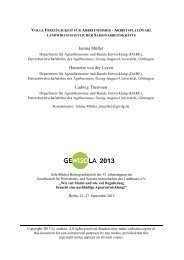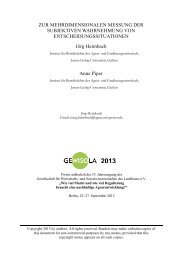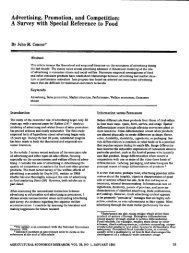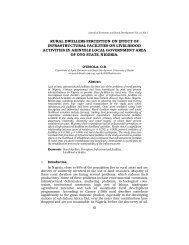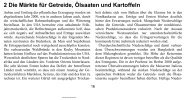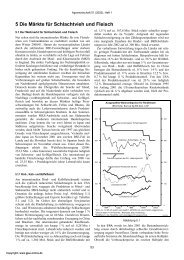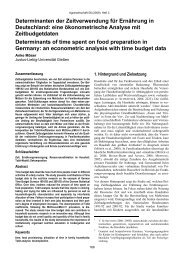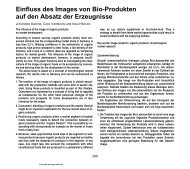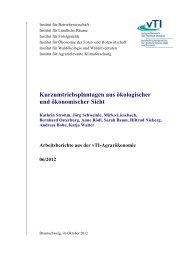District Institutes of Education and Training - Teacher Education
District Institutes of Education and Training - Teacher Education
District Institutes of Education and Training - Teacher Education
Create successful ePaper yourself
Turn your PDF publications into a flip-book with our unique Google optimized e-Paper software.
<strong>District</strong> <strong>Institutes</strong> <strong>of</strong> <strong>Education</strong> <strong>and</strong> <strong>Training</strong>: A Comparative Study in Three Indian States<br />
a) the extent to which pre-service education prepares teachers for the<br />
circumstances in which they will find themselves once in post<br />
b) the quality <strong>of</strong> in-service inputs <strong>and</strong> delivery mechanisms, <strong>and</strong> fit between<br />
training programmes <strong>and</strong> teachers’ perceived needs<br />
c) the capacity <strong>of</strong> each DIET to engage in research that relates to their own <strong>and</strong><br />
teachers’ needs.<br />
3 To assess each DIET’s internal managerial capacity <strong>and</strong> its external relationships<br />
with institutions in the <strong>District</strong> <strong>and</strong> other levels <strong>of</strong> the administrative hierarchy,<br />
in order to assess how well they are integrated into the strategy <strong>of</strong> universalising<br />
elementary education.<br />
4 To use research findings in a continuous process <strong>of</strong> providing support <strong>and</strong><br />
initiative to assist the development <strong>of</strong> capacity in DIETs, <strong>and</strong> to use this research<br />
project to strengthen <strong>and</strong> exp<strong>and</strong> that capacity through both participation <strong>and</strong><br />
example, both at the <strong>District</strong> <strong>and</strong> other levels <strong>of</strong> the administration where<br />
stakeholders have been identified.<br />
These aims <strong>and</strong> objectives were conceptualised visually (Figure 0.1). This diagram<br />
served both as a comparative framework for a situation analysis across the sites,<br />
<strong>and</strong> as a reminder <strong>of</strong> the importance <strong>of</strong> relating the DIET to its surrounding<br />
context, rather than view it in isolation.<br />
There were two interwoven str<strong>and</strong>s <strong>of</strong> project activity. One was an ethnographic<br />
situation analysis <strong>of</strong> the DIET, structured round Figure 0.1 (reported on<br />
in chapters 1-6). The project team worked within the interpretive paradigm,<br />
using a range <strong>of</strong> qualitative methods such as interviews, participant observation<br />
(including longitudinal case studies <strong>of</strong> selected elementary schools), focus<br />
groups, open-ended questionnaires <strong>and</strong> document analysis. The second project<br />
str<strong>and</strong> broadly concerned pr<strong>of</strong>essional development for DIET staff <strong>and</strong> took<br />
several forms: collaborative action research projects with staff which <strong>of</strong>fered<br />
opportunities to reflect on working practices (chapter 7); an action research<br />
project with teachers to gain detailed insight into their developmental needs<br />
(chapter 8); <strong>and</strong> research commissioned by the Government <strong>of</strong> Gujarat into<br />
its cascade model <strong>of</strong> training, with a focus on future development <strong>of</strong> teacher<br />
educators (chapter 9).<br />
4 DFID



